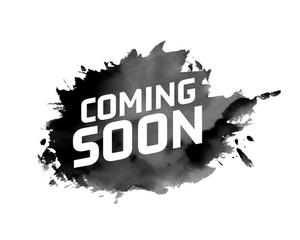Be careful out there, kids.
Jefferson
by Josh Olseon
I met Audrey back in the nascent days of the Internet, when we were both on AOL, regular contributors to a message board devoted to screenwriting. I was just starting out as a writer, and might have optioned one or two things for a few hundred bucks (if that), and Audrey was someone who enjoyed the witty banter of writers. Her posts were funny, acerbic, unsentimental and smart, and one of the many things we bonded over was our enormous admiration for author Harlan Ellison.
Eventually, Audrey (one of two people and a dog whose names I’m changing here) and I met in person, and found that the friendship we’d had on the Net translated well to the real world. She and her boyfriend Simon (the other name I’ve changed) became good and regular friends. Simon’s a nice guy — British, and a little distant and shy, but I always liked him. They were good friends to each other, but they made no pretense that it was about love. When they got married, it was more for convenience and legal gain. Simon always seemed like someone to whom love was a sticky joke, something to be avoided. And Audrey always claimed she liked it that way. She’d been through a lot of shit in her life, been married once a long time ago, and was happy with the arrangement. “He doesn’t bore me,†she’d say. “That’s better than love.â€
As well as I knew them, I was dead certain about one thing all along — no matter what she said, or how much she stressed what a great arrangement she and Simon had, she was not happy. She loved him, or, at the very least, wanted love from him. She wanted what we all want — someone who doesn’t just understand us and laugh at our shitty jokes, but someone who’ll be there to hold us in the cold, dark nights and help us cope with the indescribable loneliness of finite existence.
Years go by, and my career takes off. Harlan Ellison becomes a fan of a film I wrote, A History of Violence, and invites me to write with him, adapting his short story “The Discarded†for the ABC series Masters of Science Fiction. In the process, we become spectacular friends.
Harlan is one of America’s great short-story writers. He’s won more awards in more categories than you can count, for stories like “ ‘Repent, Harlequin!’ Said the Ticktockmanâ€; “I Have No Mouth and I Must Screamâ€; “A Boy and His Dogâ€; “Jefty Is Fiveâ€; and “The Beast That Shouted Love at the Heart of the World.†He edited the wildly successful and influential science-fiction anthology Dangerous Visions. He’s also famous for his seminal work in TV criticism, The Glass Teat, not to mention his work in television itself, having written some of the most memorable episodes of The Outer Limits, The Twilight Zone, and one episode of Star Trek that is acknowledged as the single greatest episode of that show, “The City on the Edge of Forever.†He has been a tireless crusader for civil rights, the Equal Rights Amendment and a host of other worthy causes. He also cooks a mean chili.
So now it’s about two years ago. AOL is ancient history. Audrey is getting her Internet fix on the HBO Deadwood message boards. And that’s where she makes a friend named Janna St. James, who lives in Chicago. Janna’s a former reporter who worked out of the Associated Press office in Aspen, Colorado. Her claim to fame was that she conducted a major interview with serial killer Ted Bundy. Audrey and Janna exchange e-mails, stories are told; I suspect some secrets are revealed, or at least hinted at.
Anyway, Janna knows this guy named Jesse, and she thinks he and Audrey would get along. She “introduces†them online, and they hit it off. Jesse is an amazing dude, a volunteer fireman, a cowboy, a tortured poet, a man with a past. He has an ex-wife he speaks of fondly, and a son. He lives on a ranch with llamas. He’s got posttraumatic stress disorder from having been in New York on 9/11. He knew some of the firemen who died, or something. An exceptional man. He and Audrey just click, in that special way we all hope can happen someday.
Photos are exchanged. Sweet nothings fly back and forth. At some point, they start talking on the telephone.
And they fall in love. They’ve never met. Just e-mails, pictures, and long, meaningful conversations on the phone. But it’s real. I mean, really fucking real. It’s so real that Audrey changes. No longer a dark cynic, she’s now the world’s last true romantic. You’ve never had love this special. Your life is gray and empty and you can’t possibly understand because even if it came your way, your soul is too small to comprehend the love that Audrey and Jesse were experiencing. Their love lights the skies. Us gutter dwellers, we’ll never understand.
(more . . . )
Tagged as:
legal,
Rachal K. Zall,
tes,
The Marketplace









